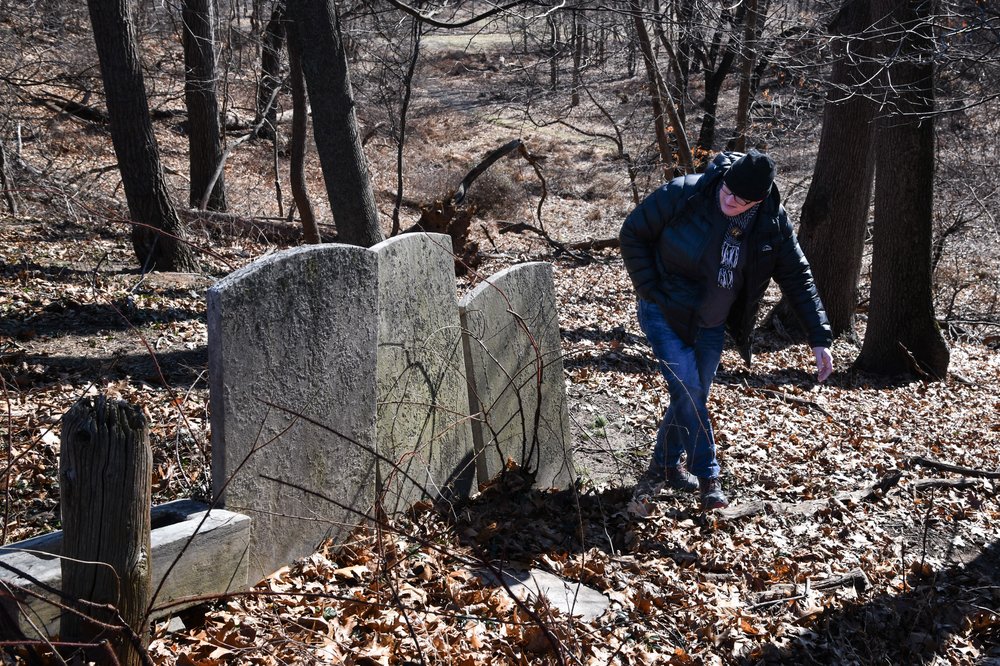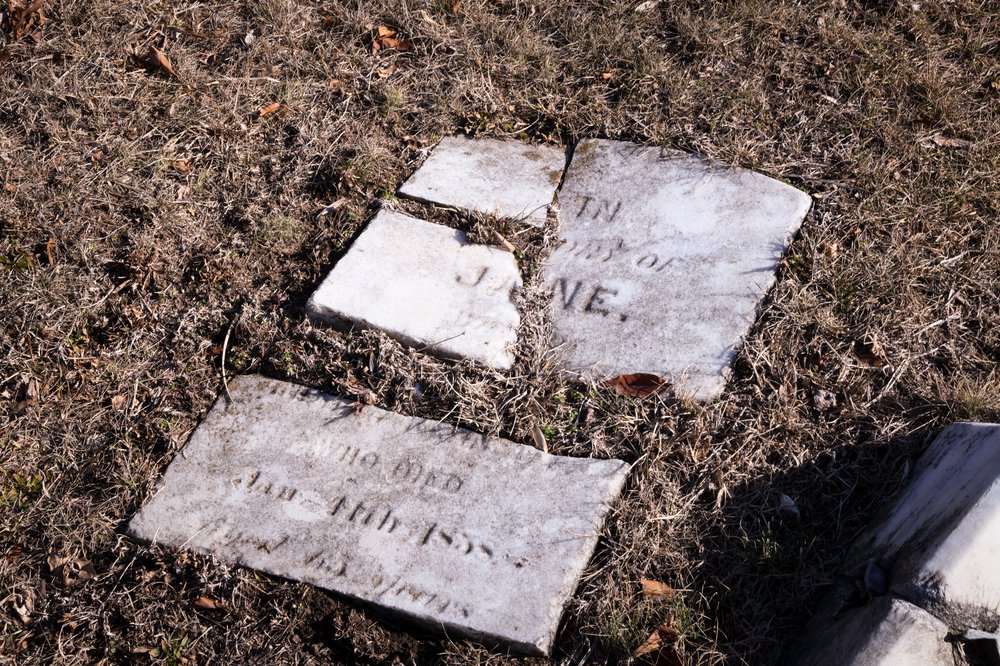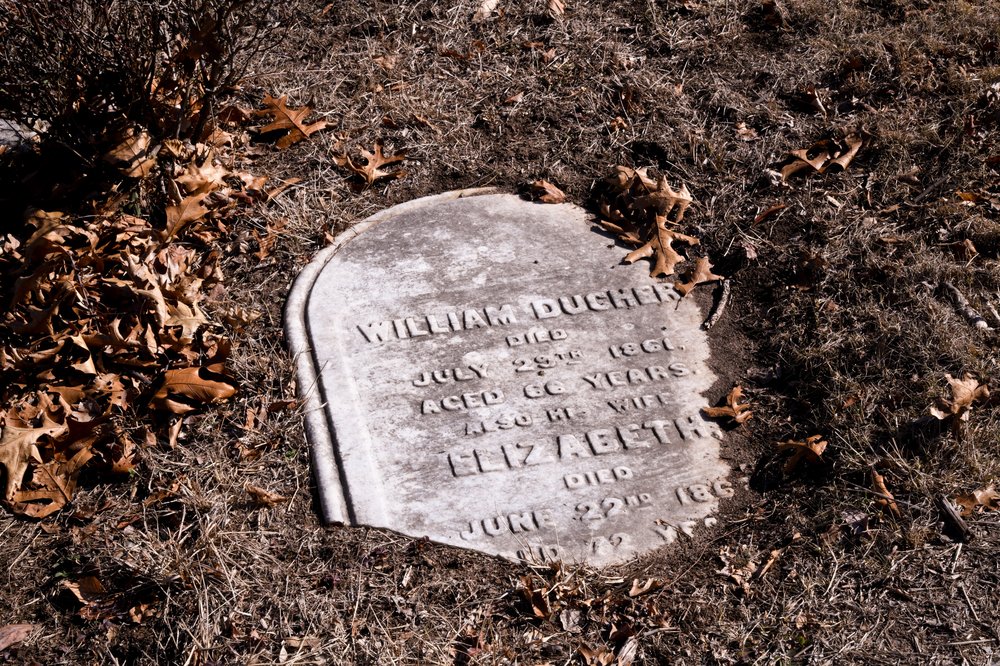NJ cemetery may have remains of enslaved people. A slaveholder's descendent hopes to prove it
March 6, 2023, 11 a.m.
A research team has been pouring through old deeds, manumission records and early historical accounts of Cedar Grove, in Essex County. Next, they plan to use ground-penetrating radar to see where remains are buried.

A New Jersey native who discovered his family owned slaves in the 1700s and 1800s is working to document a small Essex County town’s history — including that of dozens of enslaved people whose remains he believes are in a cemetery there.
“You’ll probably hear my story a hundred times from white guys who grew up in New Jersey — which is, after about two weeks of research, I realized that our family was enslavers,” said Goline Doremus Vanderhoof, a Plainfield native and adjunct arts management professor at Queen's University in Canada.
Vanderhoof always always thought of slavery as a relic of the South, he said. He hadn’t thought much about New Jersey being the last Northern state to abolish slavery, or how some people remained enslaved there until after the Civil War.
But Vanderhoof and a team of researchers have collected a trove of historical records — birth registries, bills of sale, manumissions, wills and estate inventories — to demonstrate that in the late 1700s and early 1800s, dozens of enslaved people lived in what’s now Cedar Grove, a small township of under 13,000 people near the northern tip of the county. The records include a 1782 trial transcript for runaway slave Samuel Doremus, who’d worked for Vanderhoof’s family and who later joined a provincial military unit of Loyalists.
Most of the records — including ones referencing 14 people owned by the Doremus family — only include physical descriptions, or a first name for enslaved people — “Frank, 21,” or “negro boy named Pero.”
The half-dozen researchers hope to show, through continued exploration of primary historical records and through the use of ground-penetrating radar in the next few months, enslaved people are buried in the deteriorating Cedar Grove Farm Burial Ground. The site is the final resting place of late-1700s estate owner Thomas Doremus, his descendants and other early Dutch settlers.
So many people know ... about these cemeteries and nothing is being done, and they're being ignored.
Janice Gilyard, president of the New Jersey chapter Afro-American Historical and Genealogical Society
The team has found no other trace of a burial site used by the community in its early days, and references an account written more than 100 years ago — by Doremus family in-law and historian William Nelson — describing slaves finding “everlasting rest from their enforced labor, in the family burying-ground.”
They also point to what appear to be shroud burials, without marked tombstones, as was common for Colonial-era slave burials. A 2012 archaeological study commissioned by utility company PSE&G found “possible inhumations” in the lower east field of the cemetery; Vanderhoof believes those are likely shroud burials as well.
“ The one thing we know is that the population of Cedar Grove at 1800 was around 200 people, and that over 50 of them were enslaved Africans,” Vanderhoof said.
Venderoof hopes the work will help descendants connect with the stories of people buried in the cemetery. He’s documented potential members of the diaspora of enslaved Africans connected to the Doremus family farm — descendants like steelworker and jazz musician Harry Roberts, born in 1911 in Rahway.
More broadly, the researchers plan to publish a thorough historical account of the area’s early history at the not-yet-functional cedargrovehistory.com. They anticipate the site will tell the stories of both the enslaved people and of the early Dutch settlers that researchers say aren’t acknowledged in a handful of other local published histories.
Ultimately, they hope to convince township leaders to establish some kind of educational resource or display at the site, and potentially develop a plan for restoring and preserving it — reversing more than 100 years of deterioration amid utility and township work to the area. No specific plan exists yet for a restoration, which could involve a significant capital investment from the town and coordination with PSE&G, as it has an easement for power lines.
The research team includes Colonial mapmaking and archeology specialists, a genealogist and a geophysicist, with members affiliated with Montclair State University, Rutgers-Newark and Hofstra University. They’re working pro-bono, with Vanderhoof’s arts management firm taking care of some out-of-pocket expenses.

Finding lost connections
Christopher Matthews, a historical archaeologist and professor of anthropology at Montclair State University who is part of Vanderhoof’s team, said enslaved people would have borne the brunt of the labor as the area was transformed from forests into settler communities — “clearing the land of old growth trees, managing the farms, taking care of the household, raising the kids.”
There are about 150 years of Cedar Grove history that aren’t well accounted for in existing accounts, Vanderhoof said. What histories do exist reflect stories handed down from white family to white family, he said. His own research aims to fill in the gaps before about 1820, but he hopes others will pick up the effort from there.
He said the story he hopes to publish isn't only about Cedar Grove — a community that’s now nearly 85% white and 3% Black, according to the U.S. Census — or the towns that grew up alongside it. It’s one he says represents how many communities developed. “It's about a Dutch settlement that disappeared into a white suburb,” he said.
Janice Gilyard, president of the New Jersey chapter Afro-American Historical and Genealogical Society, heard recently about Vanderhoof’s work. In her own experience, she said, once someone starts looking in earnest for stories of enslaved or free Black people in the 1800s, there are a wealth of ways to uncover who they were.
For instance: “Slave schedules” in mid-1800s Censuses usually only included barebones details of who enslaved people were — but the records of her own family include their names.
“Who were these people, you know, what were their jobs? If they were enslaved, was there a newspaper article that would give us some hint, or glimpse of what their life was like?” she said. “And in most cases, when I've researched, no matter where, I always find something. And I believe that exists for Cedar Grove as well.”
Vanderhoof said the burial site has been eroding since PSE&G removed trees and a shrub foundation to build power lines a century ago, and continued to deteriorate with subsequent work by the township and utility years later. Most headstones are missing. Many of those that remain have been knocked over, or are sunken into the ground.
He and his team suspect bodies of settlers and enslaved people have shifted down slopes created by the deterioration.
Vanderhoof says the group struggled to get the township’s permission to access the site and use ground-penetrating radar, to help account for where the bodies are. Nearly two years after being told a deed search would be needed to confirm the municipality owned the site, they heard back from a new township manager. Now both the manager and Vanderhoof expect work to start in late spring or early summer.

Collecting fragments of history
Gilyard said research that could help establish the final resting places of enslaved people, as well as free Black individuals of the 1700s and 1800s, is vital. There are no easily accessible databases or records for most cemeteries where slaves are likely to be buried, and descendants don’t have the resources or time to track down records, she said.
“So many people know — like researchers or professors — they know about these cemeteries and nothing is being done, and they're being ignored,” Gilyard said.
Many of the primary land transfer documents from before 1800 in Essex County were lost in a fire, Vanderhoof said — though he does have records reflecting a 1711 purchase by Brothers Cornelis and Thomas Doreumus of a 2,800-acre tract of land in what’s now Cedar Grove.
One member of the research team — science journalist George Musser, who’s also been working to document the region’s past through the Glen Ridge Historical Society’s EastJerseyHistory.org project — has assembled other documentation to help fill in the gaps, Vanderhoof said. That includes land transfer records from other counties, or post-1800 deeds that referenced prior owners. They also reference accounts like the 100-year-old Nelson history, which reflects the Doremus family’s own account of Cedar Grove’s early days.
Vanderhoof said those records and others are helping tell the story that ultimately led to the cemetery becoming a community business where hundreds of people were laid to rest, and to the sale of the cemetery to another family, the Morgans, who in 1985 gifted the property to the township.
He said PSE&G officials have indicated they’re open to a restoration effort, but the township would need to lead it. A PSE&G spokesperson has not yet provided a statement on the project.
Vanderhoof said he still can’t be 100% sure enslaved people are in the cemetery until his research proceeds. But if the remains are spread out throughout other sites in the township, possibly built over through hundreds of years of development, it could be much harder to connect to their history.
“But let’s say that we're totally wrong and there are no enslaved Africans in the Cedar Grove cemetery,” he said. “We have 50 Black bodies somewhere in that town. Let's hope they're in the cemetery, and not in the middle of the Stop & Shop parking lot that’s being cleared.”